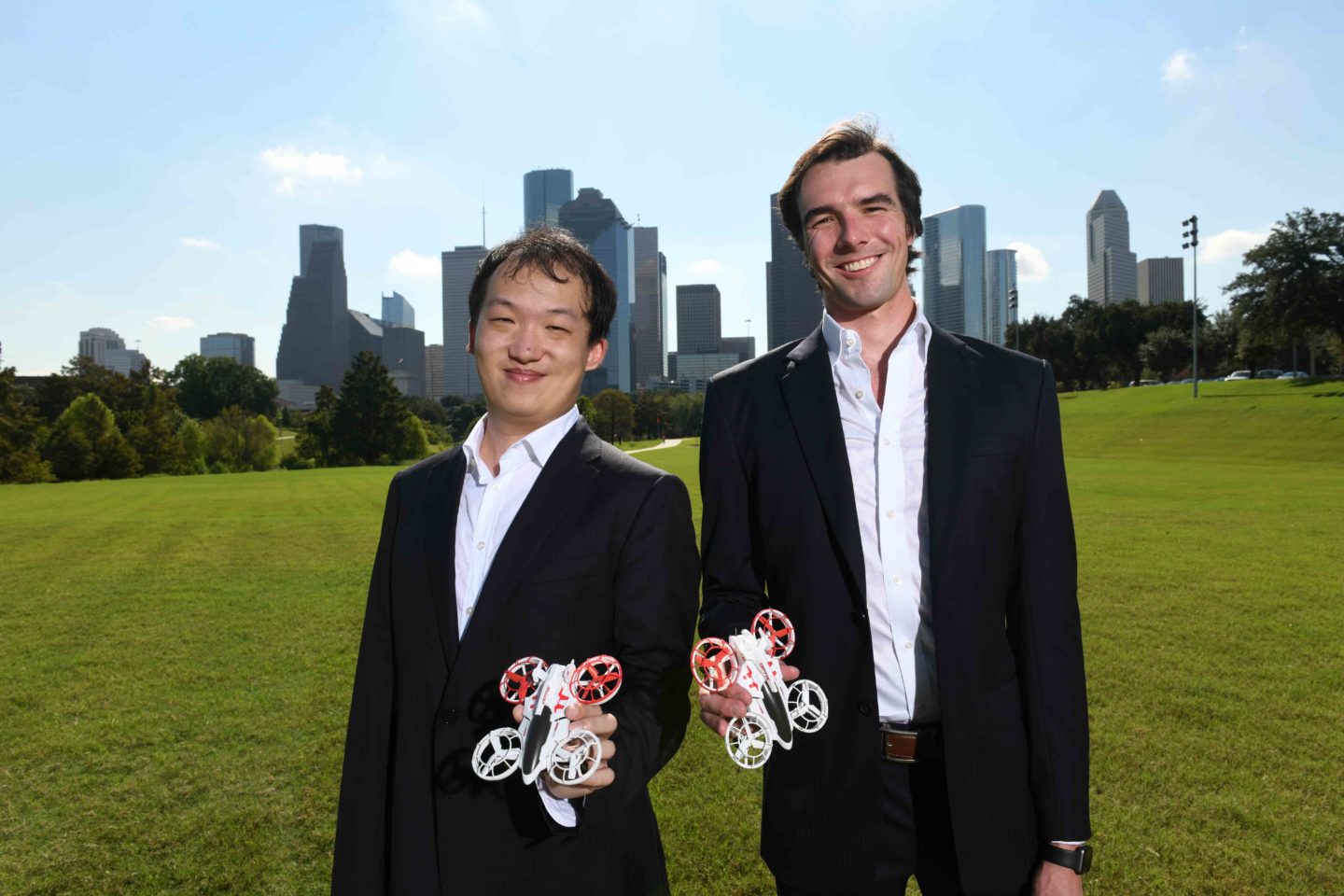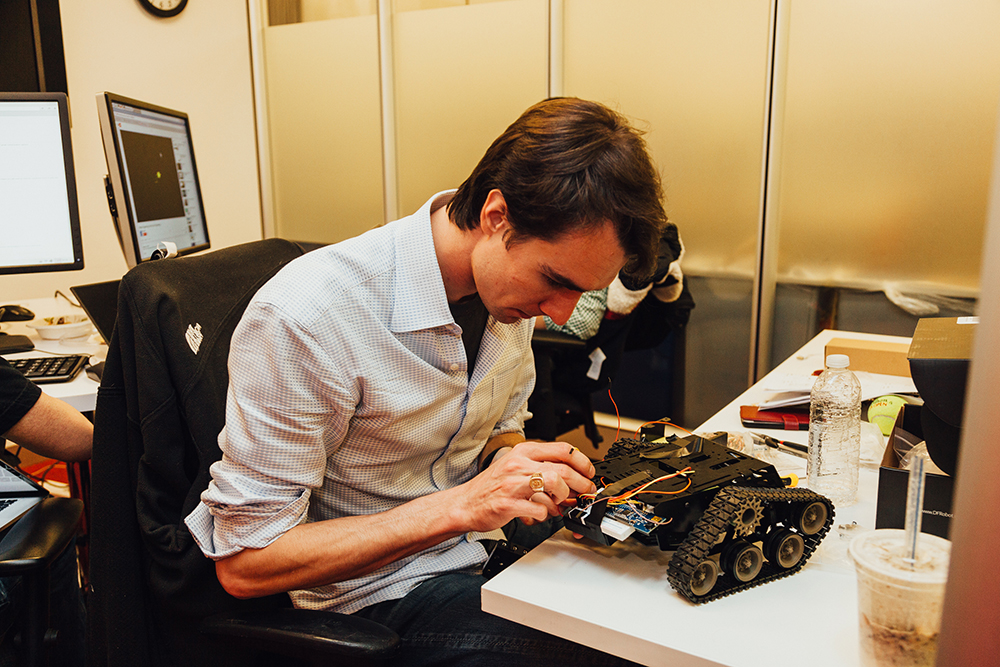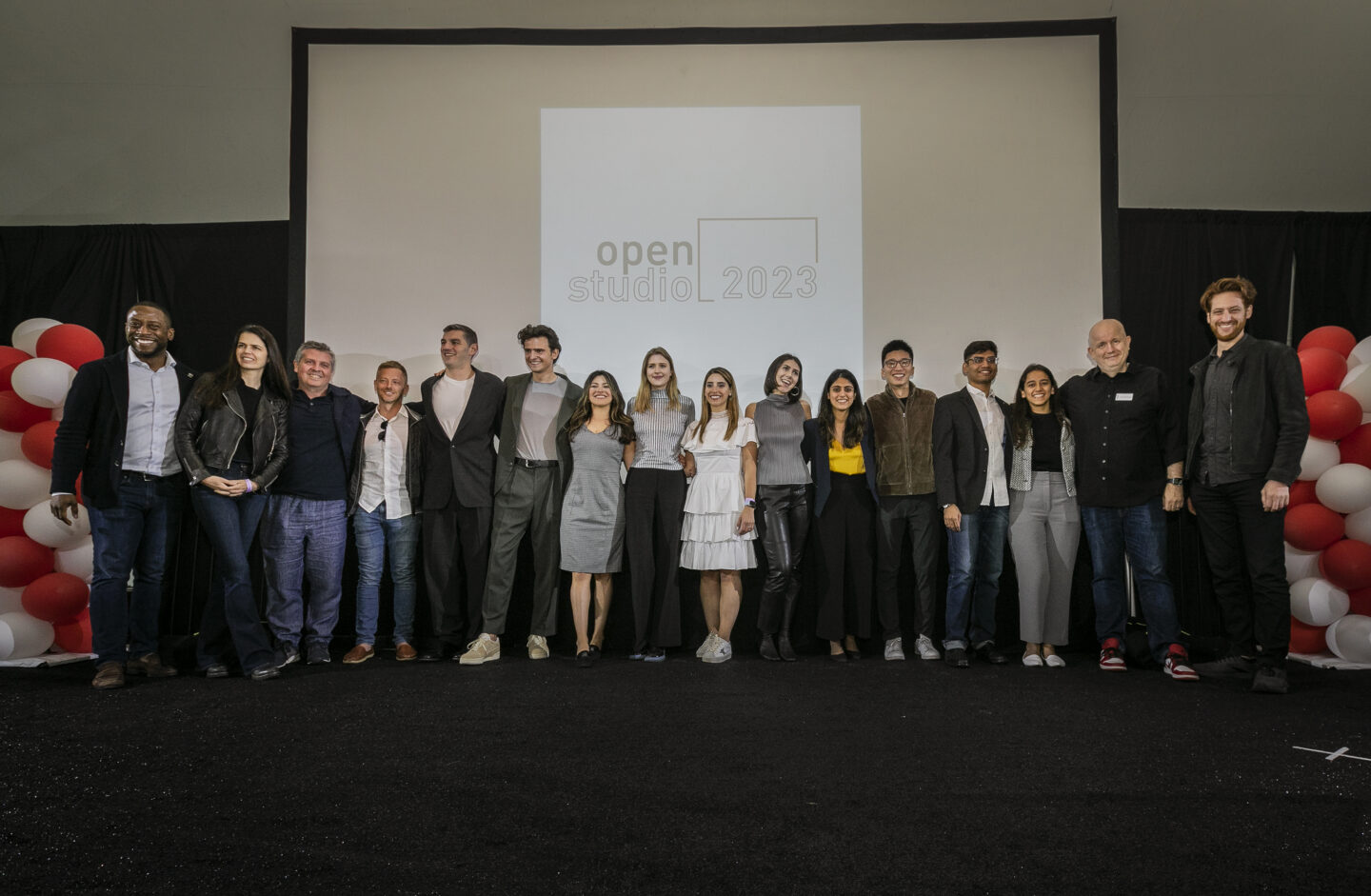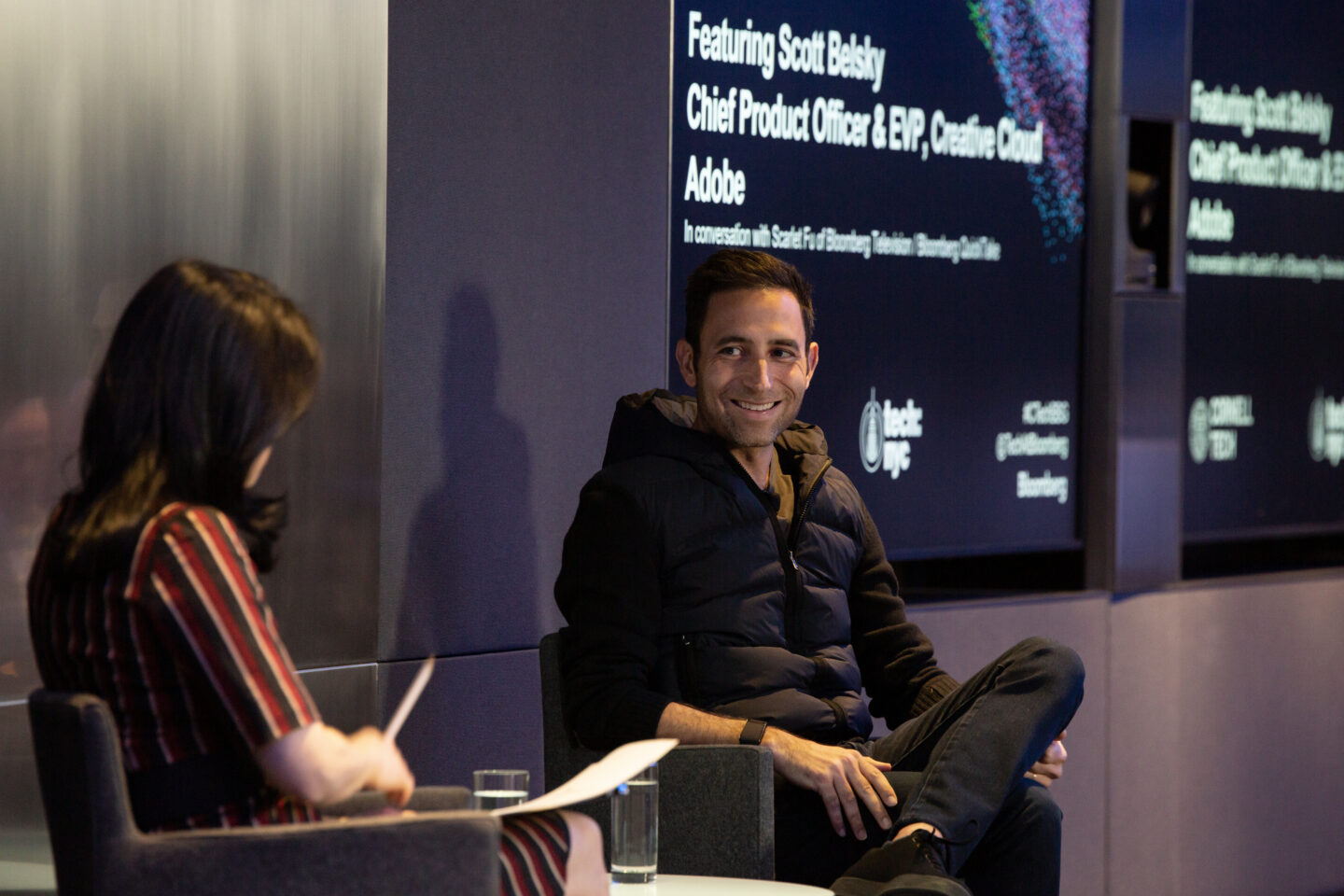
Wilson Pulling, Master in Computer Science ’16, dreamed of being a robotics entrepreneur since he was a kid. His first innovation was a drink-serving robot made from a wheeled board and tubing. Now he is CEO of Aatonomy, a forward-thinking robotics company which received a Cornell Tech Startup Award in 2016.
Aatonomy’s modular software simplifies the deployment of machine-learning and computer-vision capabilities to hardware products and robots. Their platform can add autonomous functionality to any kind of machine, whether it be cleaning a house or carrying out military maneuvers.
Built at Cornell Tech
Pulling’s trajectory from child inventor to robotics pioneer began at the University of Pennsylvania in the M&T Program, where he earned dual undergraduate degrees in Mechanical Engineering and Business. He went into management consulting but transitioned into a mission to acquire expertise in the third part of the robotics entrepreneur trifecta: programming skills. Cornell Tech, with its focus on technology and business, was the perfect fit.
At Cornell Tech, Pulling met Yang Hu, a microelectronics specialist who had studied at Tsinghua University in China; Hu is co-founder and now CTO of Aatonomy. Brainstorming ideas along with Kuowei Tseng and Jeehyun (Inna) Kim, both Master’s of Computer Science ‘16 and the other members of their Startup Studio team, they decided that rather than build a one-task robot, they would produce infrastructure technology to enable many robots.
Pulling and Hu asked themselves what it would take for robotics to become mainstream: for robots to be found in every home and business. Currently, robotics faces a core problem as hardware and software development are tightly paired.“Robots are purpose-built and inflexible. It’s difficult to add new functionalities or even to keep them updated with the best solutions. Hardware companies that want to add ‘smart’ functionality to their products shouldn’t have to become algorithmic experts,” Pulling said. To become mainstream, they concluded, the deployment of intelligence across any form factor had to be simplified.

Powered by Aatonomy
The first “Powered by Aatonomy” application adds a “Follow-Me” selfie mode to a $100 drone sold by a Canadian company, LiteHawk, at The Source stores in Canada. The drone’s new mode allows the machines to fly themselves, to lock onto and follow users, and to shoot videos and close-ups.
The code has been added to LiteHawk’s existing iOS and Android apps, meaning it runs on users’ smartphones. “We change the iOS code and all of a sudden the drone can fly autonomously. We don’t have a special chip they have to put in, and the drone doesn’t need to have GPS. The fact that we don’t have to change their hardware at all is mind-bending to them,” Pulling said.
A Viable Business
At Cornell Tech, Pulling, Hu, and their teammates developed Aatonomy’s initial architecture and showed they could control different robots with the same code base, but they also worked on their business model. “Cornell Tech inherently forces you to evaluate the viability of your product as a business, not just as a technology, from the very beginning,” said Pulling.
Building a competitive edge in robotics is notoriously challenging since software and hardware change quickly and become outdated. Aatonomy tackles this by focusing on integrations. “Hardware can be copied in six months, and algorithms become depreciated in 18 months. By making it really easy to cycle new algorithms into new or even existing hardware, we serve a need that will never go away,” said Pulling.
Receiving a 2016 Cornell Tech Startup Award allowed Pulling and Hu to take Aatonomy to the next level in a real-world setting and when they graduated later that year, the pair relocated to California. With further assistance from Alchemist Accelerator, they identified B2B selling opportunities and robotics applications that could be enabled with their software. The company is now based in Houston where they’ve been able to acquire 800 sq. ft. of office space. “It’s important [to have more space] because we’re flying the robots around. We have the robots running around the office,” said Pulling.
The LiteHawk drone is the first “Powered by Aatonomy” product, and retail drones have served as their initial wedge into the market. But Pulling and Hu are already preparing to expand to other categories, from cleaning robots, to security cameras, and even to military applications with the Department of Defense. “We did a week-long experiment with them in the desert and we just said, ‘Bring us your robots and we’ll make them autonomous,’ Pulling said. “It’s the same code for military ground robots as it is for the retail drones. That’s the whole point.”





